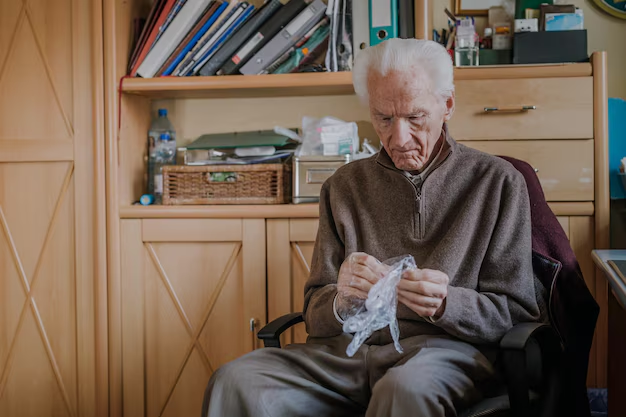Unraveling the Mystery: Two Likely Causes of Parkinson's Disease 🧠
Imagine a world where the simplest tasks—tying shoelaces, writing a note, holding a cup—become monumental challenges. For millions of people globally, this is a daily reality. Parkinson’s disease, a degenerative disorder of the central nervous system, affects movement, causing tremors, stiffness, and slowness. While researchers have yet to pinpoint the exact cause of Parkinson's, consensus suggests two primary factors: genetics and environment. Let's delve deeper into these factors to understand how they contribute to this complex condition.
Genetics: A Legacy of Predisposition 🧬
The genetic underpinnings of Parkinson's disease are intricate. Although only about 10-15% of cases are linked directly to genetics, understanding these ties provides crucial insights into the disease's mechanics and potential treatments.
The Role of Genes
Several specific genes have been identified as potential players in the development of Parkinson's disease, notably:
- SNCA: This gene encodes the alpha-synuclein protein, which is involved in regulating dopamine—a neurotransmitter critical for movement. Mutations in SNCA can lead to the accumulation of alpha-synuclein, forming toxic clumps that damage neurons.
- LRRK2: Mutations in LRRK2 are the most common genetic cause of Parkinson's in people of European descent. This gene plays a role in immune responses and cellular maintenance, with its mutations leading to cellular dysfunction.
- PARK7, PINK1, and PRKN: These genes are involved in mitochondrial function and protection against oxidative stress. Defects can disrupt cell function and lead to neurodegeneration.
Hereditary Patterns
While having a family member with Parkinson's does increase your risk, it's not solely deterministic. The interaction between multiple genes and environmental factors complicates the inheritance pattern. Understanding genetic mutations offers ways to identify at-risk individuals and develop targeted therapies, potentially altering disease outcomes.
Environment: The World Outside Influencing Within 🌍
The environmental impact on Parkinson’s disease is significant, interacting intricately with genetic predispositions. Several environmental factors have been identified as contributing to the disease.
Pesticides and Herbicides
Exposure to certain chemicals, especially in rural or agricultural settings, is strongly linked to a higher risk of developing Parkinson's:
- Paraquat and Rotenone: These chemicals are known to inhibit mitochondrial complex I, leading to increased oxidative stress and neuronal death, mimicking the pathophysiology of Parkinson’s.
- Maneb and Ziram: Both are associated with the degeneration of dopaminergic neurons, further substantiating the chemical exposure theory.
Heavy Metals
Exposure to heavy metals such as manganese and lead has been correlated with Parkinson's. Prolonged exposure, particularly in industrial settings, can accumulate in the brain, disrupting cellular processes and causing neurological decline.
Pollution and Lifestyle
Air pollution, particularly exposure to fine particulate matter, is emerging as a risk factor. Urban lifestyles with reduced physical activity, increased stress, and certain dietary patterns may exacerbate the onset or progression of Parkinson's. It's essential to consider these cumulative lifestyle factors when assessing environmental risks.
Holistic Approach: Genetics Meets Environment 🧩
Neither genetic nor environmental factors solely dictate the onset of Parkinson’s disease. Instead, it's their interaction that likely tips the scales. Understanding this interaction offers potential pathways for intervention and prevention.
Scientific Advances in Understanding Interactions
Researchers have been exploring how environmental exposures might influence the expression of certain genes. For example, someone with a genetic mutation might only develop Parkinson's if exposed to a specific environmental factor. This gene-environment interaction is a hotbed of research, opening avenues for personalized medicine.
Lifestyle Interventions
While we can't alter our genetic makeup, we can mitigate environmental exposure and lifestyle risks:
- Diet and Nutrition: Diets rich in antioxidants can help combat oxidative stress, a contributor to neuronal damage.
- Exercise: Regular physical activity is linked with a slower progression of Parkinson’s, likely due to its effects on brain plasticity and health.
- Reducing Exposure: Minimizing contact with pollutants and toxic substances can reduce risk, emphasizing the importance of clean air policies and safe agricultural practices.
The Road Ahead: Research and Hope 🚀
Continued research is crucial to unraveling Parkinson's complete etiology. Current efforts focus on expanding genomic databases, developing accurate biomarkers for early detection, and creating interventions that modify disease progression.
The Promise of Personalized Medicine
As we refine our understanding of gene-environment interactions, we're moving closer to personalized medicine—tailoring prevention and treatment strategies based on individuals' genetic and environmental profiles. This approach holds promise for early intervention and better management of Parkinson’s disease.
Community and Support
Awareness campaigns and community support play vital roles. Sharing knowledge and resources empowers individuals and advocates for those affected. Engaging with research and patient advocacy can drive policy changes and fund essential scientific inquiries.
In navigating the complex landscape of Parkinson’s disease, knowledge remains a powerful tool. By understanding the potential causes—genetics and environment—we're not just unraveling the disease’s mysteries but paving a hopeful path forward for prevention, intervention, and ultimately, a cure.
📝 Key Takeaways and Practical Tips:
- Gene Awareness: Be informed about any family history of Parkinson's and consider genetic counseling if at risk 🧬.
- Safe Practices: Limit exposure to pesticides, industrial chemicals, and air pollution where possible 🌿.
- Healthy Lifestyle: Prioritize a diet rich in antioxidants, engage in regular physical activity, and maintain mental agility through hobbies and social interactions 🍏🧘♂️.
- Community Engagement: Support research initiatives, participate in awareness activities, and stay informed about new scientific developments 🤝🔍.
Understanding the interplay between genetic and environmental factors is essential, not just for those affected by Parkinson's, but for everyone keen on a healthier life. 🌟

Related Articles
- Are There Environmental Causes Of Parkinsons
- Can Alcohol Cause Parkinson's
- Can Concussions Cause Parkinson's
- Can Females Get Parkinson Disease
- Can Head Trauma Cause Parkinson's
- Can Parkinson Disease Cause Dizziness
- Can Parkinson's Affect Eyesight
- Can Parkinson's Affect Memory
- Can Parkinson's Affect Speech
- Can Parkinson's Affect Vision